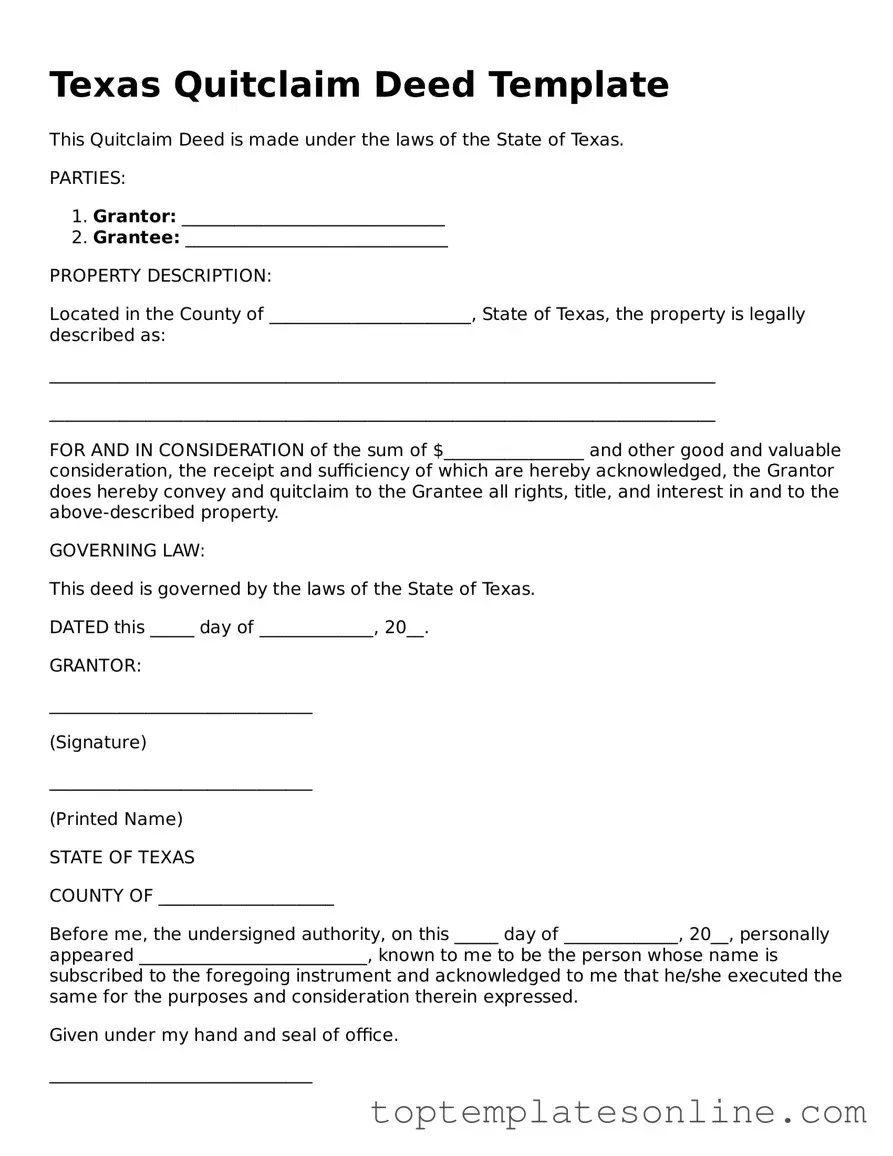The Texas Quitclaim Deed form serves as a crucial legal instrument for transferring property rights between parties. Unlike other types of deeds, a quitclaim deed does not guarantee that the grantor holds clear title to the property, nor does it provide any warranties against future claims. This makes it a straightforward option for transferring ownership, particularly in situations involving family members or when the parties know each other well. The form typically includes essential details such as the names of the grantor and grantee, a legal description of the property, and the date of the transfer. Importantly, the quitclaim deed must be signed by the grantor in the presence of a notary public to ensure its validity. While this form is often used in divorce settlements, estate transfers, or to clear up title issues, it is essential for both parties to understand the implications of using a quitclaim deed, as it does not protect the grantee from any existing liens or claims against the property. Thus, while the Texas Quitclaim Deed form can facilitate a simple transfer of ownership, it is vital to approach its use with caution and awareness of potential risks.
